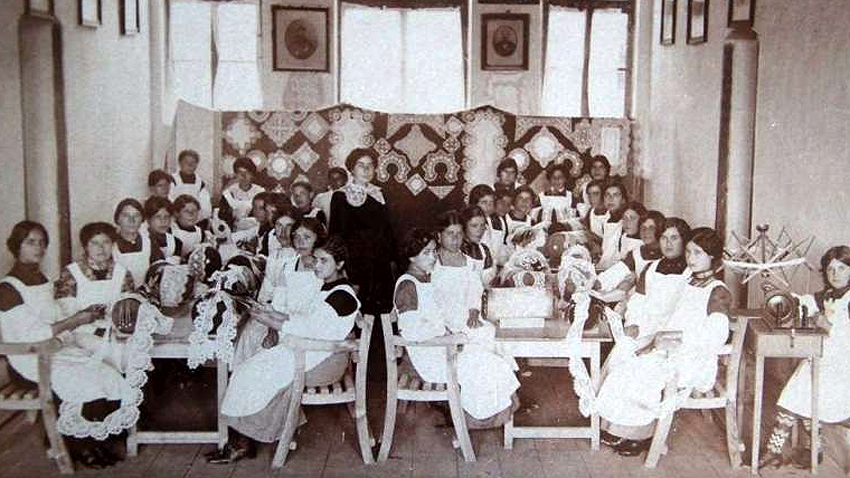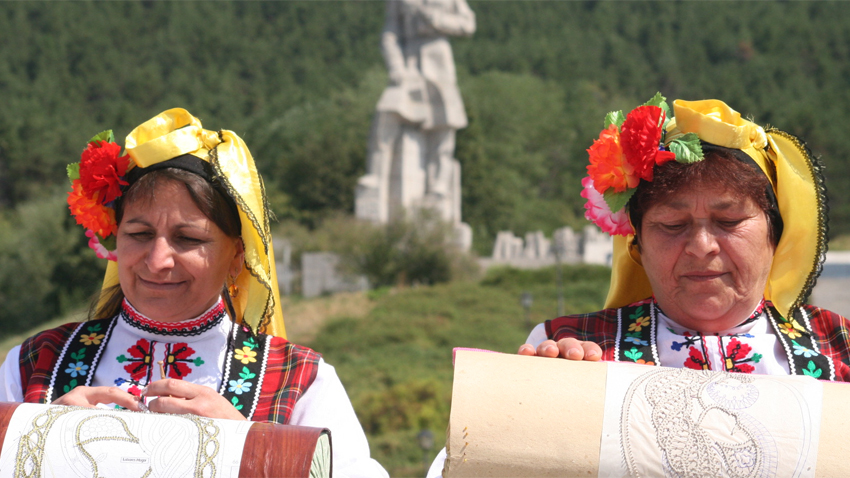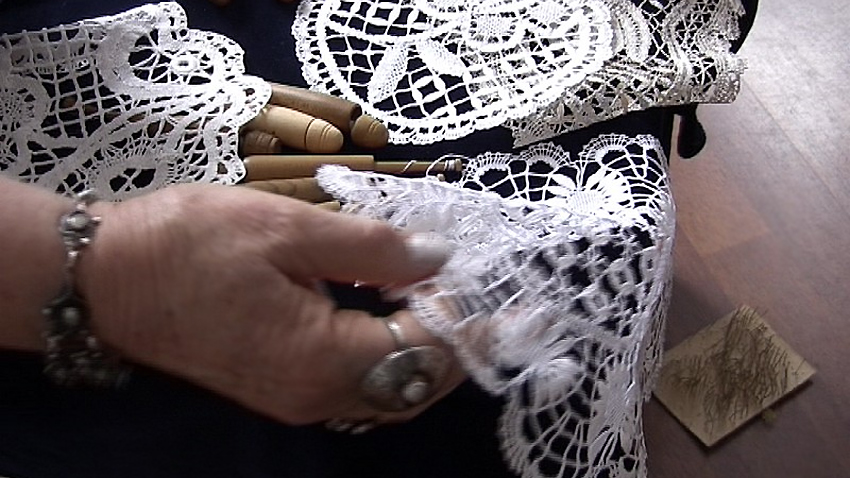At the beginning of the past century women from Kalofer were knitting laces more exquisite than Brussels lace. They had not received their education in academies of art and had not been to European cities, nor were they acquainted with fashion trends. But they had the most important quality - desire for knowledge and creativity, adventurous spirit, and imagination.
The Bulgarian town of Perushtitsa from the period of the Bulgarian National Revival brings us back to times when the art of Kalofer women captivated the heart of Europe. In the period September 8-14, the so-called Danovo School, named after its first teacher Hristo G. Danov, becomes venue for those willing learn to knit various laces – Brussels laces, frivolité laces and ‘kene’ (also known as Armenian lace).
The secrets of Brussels lace were brought to Bulgaria after the Liberation by Elisaveta Karaminkova. Knitting laces became a popular activity among women in the city. But women were not just copying but actually creating new types of laces and thus the Kalofer lace was born.

The women in Kalofer managed to quickly open a school, which taught basic lace knit patters. In less than half a century they created their own style that received global exposure and received gold medal at an international exhibition, Ema Zhunich who leads the lace-knitting workshop in Perushtitsa, says.
 But what is this purely Bulgarian thing that Kalofer women introduced to lace-knitting?
But what is this purely Bulgarian thing that Kalofer women introduced to lace-knitting?
“Brussels lace is very airy and is characterized by great delicacy but it is not very stable and cannot be often washed or starched,” Emma Zhunich says. “The first innovation was tightening the canvas and making the lace tight. The second is that Kalofer laces are characterized by dozens of patterns in the shape of sunflowers, flowers, animals, birds. A curious fact is that even today such exquisite patterns are rarely seen in the home of Brussels lace - Bruges.”
Emma Zhunich says Kalofer Lace is expensive needlework, but not in Bulgaria. Unfortunately, in this country the situation is different. Those who have the money have no taste for art and would rather buy a plastic doily. Those who appreciate the art of lace-knitting have no money to afford it. The master of lace knitting works in the Bulgarian Academy of Sciences where she explores musical theater, but her mission is reviving at least some of the traditions and skills of our ancestors. She had spent 16 years looking for an elderly woman who could show her how to use the needle from her grandmother's attic. That is why she is also happy when young people show interest in this art and ask her about some of its secrets. However, in the homeland of Brussels lace continuity between generations is a fact, while in Bulgaria few girls learn the skills of their grandparents, Emma Zhunich says.

“In Bruges, during holidays, Flemish women stay in front of their homes in traditional clothing, knitting. Tourists take pictures or buy some of their laces rather than going to the shop round the corner. The best thing is that little girls skillfully help the elderly women when knitting. In Bulgaria we say that knitting is for the old people but the young do not know what a pleasure it is to make something yourself – first using your imagination and then your hands. This cannot be compared even to the most expensive laces from the Flemish shops. Generations of Bulgarians have been deprived of that.”
But if we preserve something useful from the past, it would bring us benefits sooner or later, Ema Zhunic says.
English; Alexander Markov
At the Bulgarian Embassy in London, Prof. Bettany Hughes presented excerpts from the new BBC series - Wonders of Bulgaria. Prof. Bettany Hughes is the author of two episodes of the documentary. Hughes is a historian, writer, author of..
According to the Annual Report on the Health Status of Bulgarian Citizens for 2023, t he main cause of death in Bulgaria is diseases of the cardiovascular system (61.1%), followed by oncological diseases (16.5%) and diseases of the respiratory system..
In the week of St. Andrew’s Day (also known as Bears’ Day or Mechkinden), WWF is drawing attention to six orphaned bear cubs who have been given a second chance at life. The initiative is part of the "Subscribe to Nature" campaign and..
The Bulgarian Hotel and Restaurant Association has presented its annual awards for professional achievements in the field of tourism, in which it also..

+359 2 9336 661
